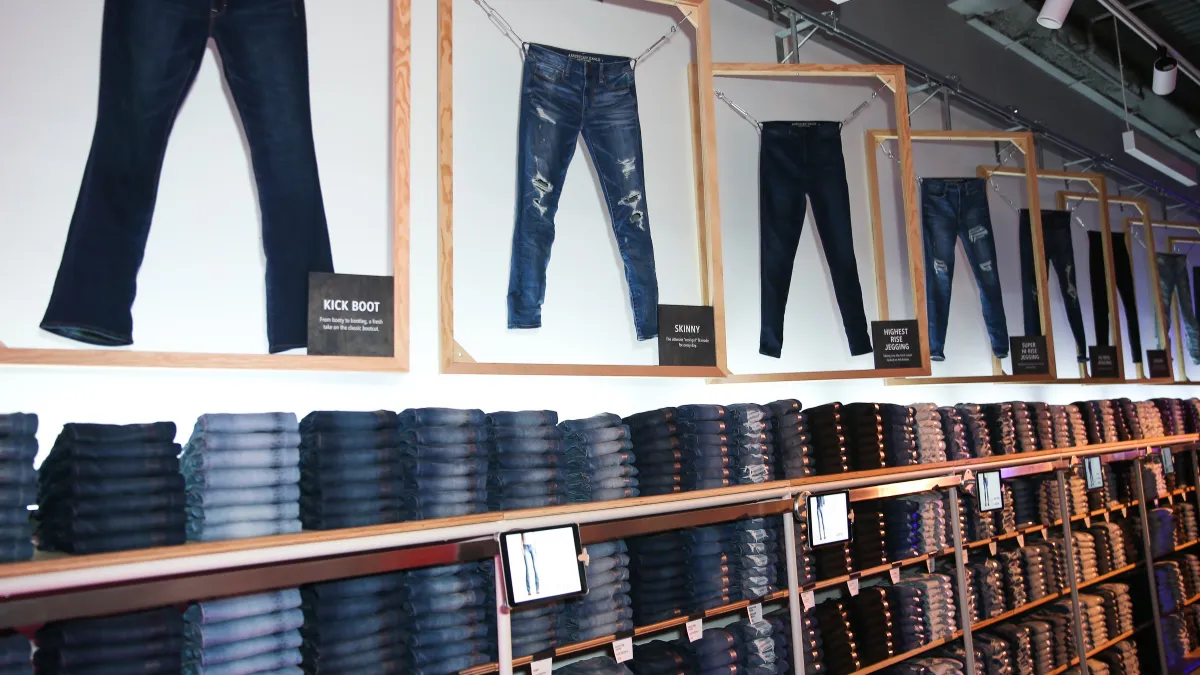Dive Brief:
- American Eagle Outfitters will stage materials with manufacturing partners ahead of peak season to be ready to replenish stocks if demand spikes without increasing inventory, Chief Operations Officer Michael Rempell told analysts on a Wednesday earnings call.
- At the end of the second quarter, the apparel retailer's inventory was down 21% year over year (YoY), after an 8% YoY decrease in the first quarter. Total revenue for the company was down 15% YoY in Q2, despite a 48% YoY increase in digital sales.
- For the fall and holiday seasons, the company is bringing in a smaller assortment and reducing overall SKU count, with much of the new product coming from suppliers that require smaller minimum upfront buys, to maximize flexibility.
Dive Insight:
Inventory management has been a top priority for many apparel retailers throughout the pandemic, as the trend toward faster inventory turns in recent years makes apparel more "perishable" than other discretionary categories that have seen demand drops.
American Eagle's inventory reduction in Q2 was aggressive on purpose, according to the COO. "The proactive cuts to inventory receipts early in this crisis enabled us to improve total company [average unit retail price], control promotional activity, and end the second quarter with inventory positioned well," Rempell said on the call.
Rempell detailed the balance that many retailers are seeking to strike as peak shopping season approaches: to have enough product on offer to entice shoppers, without risking cash-intensive upfront buys or excessive markdowns on the far side of the holidays.
To strike that balance, American Eagle buyers will position raw materials at suppliers' factories to speed up replenishment orders while not committing to large upfront buys.
Strong vendor relationships are essential to this strategy, because suppliers must be willing to participate and will be entrusted to safely store materials. Respectfully dealing with suppliers throughout the pandemic has engendered this mutual trust, Rempell said.
"Although we have significantly cut back on our inventory receipts, we've continued to honor our obligations to vendors and support their liquidity with timely payments," he said. "As a result, our vendor relationships remain as strong as ever and we have secured available chase capacity for the balance of the year."
Technology will help the company optimize its inventory. "We also built out more advanced analytics and decision-science capabilities and are starting to use machine learning, in terms of how we position inventory," said Rempell.
This story was first published in our weekly newsletter, Supply Chain Dive: Procurement. Sign up here.














